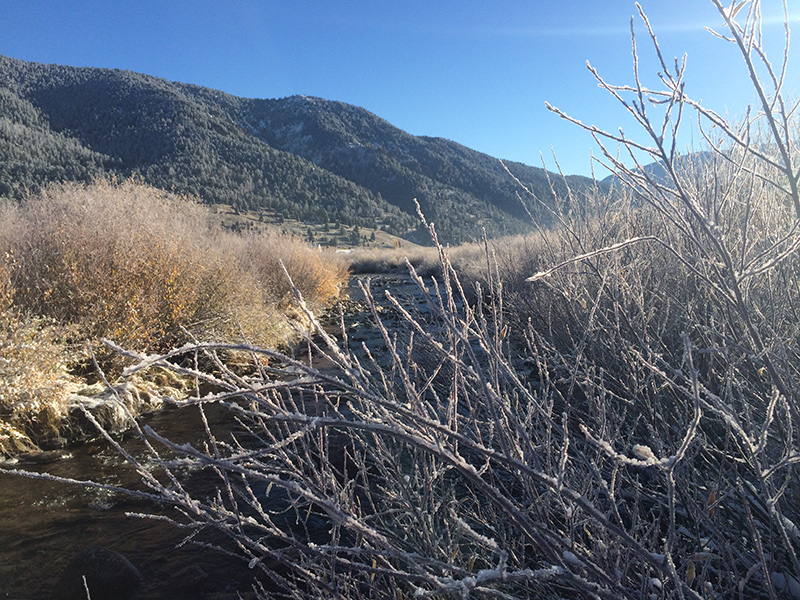“It’s the nutrients, stupid.”
That’s a paraphrase of the now-classic campaign line by James Carville, but when it comes to improving water quality in the Big Sky area, the solution is almost that simple. If we want cleaner water, we must reduce the concentration of nutrients entering our ground and surface water resources. Thanks to a study by Chris Allen, PhD at WGM Group, we can now quantify the harmful pollutants entering the West Fork and main stem Gallatin River.
Based largely on 20 years of data collected by the Gallatin River Task Force, Allen’s Big Sky Nutrient Assessment identifies the largest sources of nutrient pollution and recommends mitigation strategies. Many of the strategies and sources have been identified in the past, and indeed GRTF has already completed projects recommended in the assessment.
Those projects include but are not limited to streambank restoration along the Middle Fork, public-awareness campaigns focused on septic-system maintenance and advocating for the already-approved upgrade to the Big Sky County Water and Sewer District’s wastewater treatment plant. With Allen’s assessment in mind, we can scale our efforts to increase the long-term impact of such projects.
The Healthy Headwaters Alliance identified primary sources of wastewater irrigation, septic systems, equestrian and grazing operations, stormwater, and potentially even dog poop. The nutrient assessment provides preliminary quantification of these sources to identify where the best “bang for the buck” is to see measurable improvements, primarily in the West Fork, but with an overall benefit to the Gallatin as well. Using an analysis of baseflow, an estimated 5,000 pounds per year of nitrogen appear to make it into the West Fork from human sources with an estimated 40 percent potentially attributable to wastewater irrigation and 30 percent to onsite wastewater treatment (septic) systems.
Based on those numbers, it’s clear that irrigating with wastewater, while it has eliminated the threat of direct discharge into the Gallatin and has significant nutrient removal benefits, has negative environmental impacts of its own. Once online, however, the new wastewater treatment plant will reduce the nitrogen load of irrigation by 70 percent, when compared to current concentrations. “Upgrading the treatment plant is likely the single most effective step in reducing nitrogen concentrations in the West Fork of the Gallatin River,” Allen reiterated in his report, underscoring the environmental benefits of the new plant.
While it’s a big step in the right direction, improving the quality of our municipal wastewater won’t solve the nutrient problem entirely. In the canyon and Big Sky area, individual septic systems leach an estimated 5,000 pounds of nitrogen annually into the watershed, and this area is expected to develop rapidly in the coming years. Without centralized water and sewer services, that already high number will undoubtedly increase, posing perhaps the greatest yet-to-be-realized threat to the Gallatin.
According to the Canyon Area Feasibility Study conducted by Mace Mangold of the WGM Group, instream loading in the canyon could more than double in the next 20 years. Additionally, “onsite systems have an average life of 20-30 years, meaning that many systems built in the 1990s are reaching the end of their design life,” added Allen.
While regular maintenance and well-sited systems can reduce loading from individual septics, forming a canyon area water and sewer district and connecting to the BSCWSD’s new treatment plant would likely lead to the greatest reduction in nutrient loading to the main stem. This connection is likely to be expensive for homeowners in the canyon, but by forming a district, funding opportunities such as grants and low-interest loans become available, which could help in shouldering some of that financial burden.
In addition to wastewater-related loading, concentrated livestock grazing represents a notable pollutant in the upper Gallatin watershed, and may be the single most cost-effective nutrient load to remove. Many horse operations exist directly adjacent to water resources, making this a particularly troubling source. Low-cost runoff management, manure handling practices, and riparian protection can nearly eliminate impacts to streams.
With this assessment in hand, we have a detailed blueprint for water-quality improvement.
This article originally appeared in Explore Big Sky’s Water Wisdom column.

